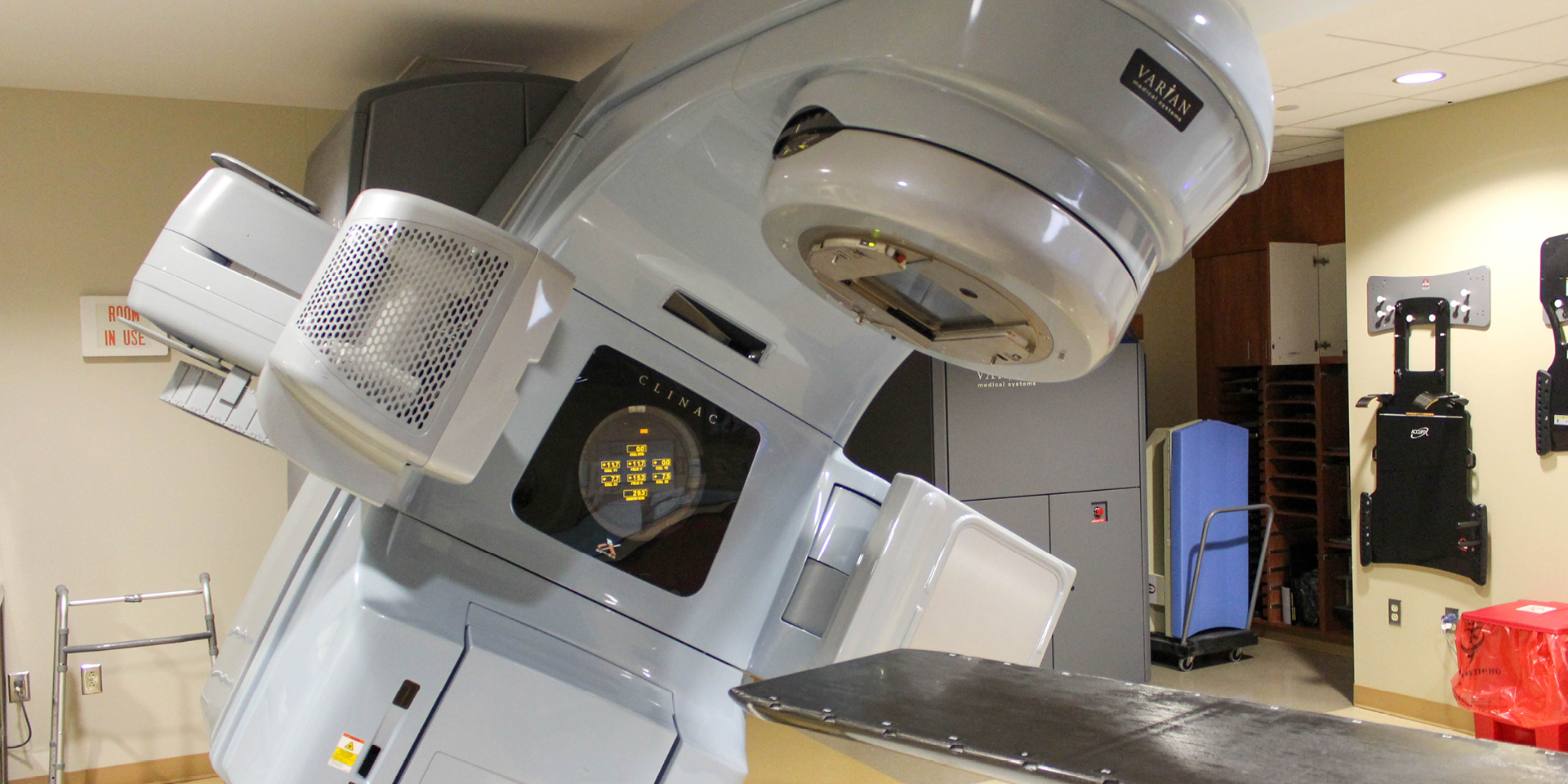Radiation therapy uses radiation to kill cancer cells and shrink tumors. While radiation is effective as a cancer treatment, it can also damage the heart and other organs and possibly cause secondary cancers. In recent years, radiation oncologists have developed techniques to better target radiation doses and reduce injury to healthy cells.
In addition, Penn Radiation Oncology at Doylestown Hospital and the Doylestown Health Cardio-Oncology Program have partnered to ensure that patients’ hearth health is monitored for the long term.
Cardiac-Sparing Advances in Radiation Therapy
Radiation oncologists map out a patient’s internal organs and structures to avoid radiating healthy tissue as much as possible. For a long time, this was done using 2D X-ray imaging. Dr. Sonal Mayekar, a radiation oncologist with Penn Radiation Oncology, explains that three-dimensional CT scans are now used to produce more accurate radiation plans. “Today, we are able to plan using high-resolution, 3D images to survey each patient’s unique anatomy. We can draw where the heart is on the CT scan and then create a radiation plan that avoids this area.”
Another technological advance that helps to reduce radiation toxicity is intensity-modulated radiation therapy (IMRT). This technique manipulates radiation beams to match the precise contours of a tumor, minimizing dosage to surrounding, normal tissue. Dr. Mayekar cites this as a significant tool in protecting the heart.
Accelerated Partial Breast Irradiation (APBI) uses the IMRT precision technology to administer a smaller field of radiation. This approach requires five treatments versus the usual 16-20 and is used for certain lower risk breast cancers. Dr. Mayekar estimates that she treats 50% of her patients with APBI. APBI reduces radiation exposure to the remainder of the breast, the heart, and other healthy structures.
Deep Inspiration Breath Hold (DIBH) is a highly effective, cardiac-sparing technique for left-sided breast cancer. Patients take a deep breath and hold it while radiation is being delivered to the breast. The deep breath expands the lungs, pulling the heart away from the chest wall and reducing its exposure to radiation.
Prone positioning is another technique to limit radiation exposure to the heart and other organs and tissue. Breast cancer patients lay on their stomach with the breast hanging away from the body. Gravity pulls the breast tissue away from the heart.
Proton therapy is a new type of radiation therapy. Because the protons do not travel through the body like X-rays, but instead stop once they deliver their radiation, this treatment is used for most pediatric patients. “Proton therapy can also be beneficial for women who maybe have a little bit different anatomy or a challenging plan for us to implement with our conventional radiation. It can make it easier to avoid the heart in some cases,” says Dr. Mayekar.
Cardio-Oncology Program Referrals
The Doylestown Health Cardio-Oncology Program, one of only a handful in the region, identifies cancer patients at higher risk for damage to their heart and cardiovascular system and provides them with access to early assessment, intervention, and treatment.
Guidelines were created for Radiation Oncology to know when to refer their patients to the Cardio-Oncology Program. These guidelines take into account: dosage, areas of radiation, pre-existing cardiovascular disease, cardiovascular risk factors, and if the patient is also receiving chemotherapy with radiation. Dr. Mayekar refers her breast radiotherapy patients to the program, adding, “I always recommend it for women who also get chemotherapy or HER 2-targeted therapy that can carry additional cardiotoxicities.”
Eligible patients are encouraged to schedule an appointment through the program as soon as treatment is complete. The cardiologist can then establish a baseline picture of their cardiac health. If there is something acute that needs attention, patients can be taken care of sooner. The cardiologist will continue to monitor their heart health over the years.
“As oncologists, we see patients for about the first five years post-treatment,” says Dr. Mayekar. “A lot of times, these changes that we see with the heart don’t occur until 10-12 years later. The Cardio-Oncology Program is there to follow these patients throughout survivorship.”
Penn Radiation Oncology at Doylestown Hospital
Through Doylestown Health’s partnership with Penn Medicine, radiation therapy is offered at The Pavilion on the Doylestown Hospital campus. Penn Radiation Oncology Doylestown Hospital is a state-of-the-art facility that serves as Bucks County’s satellite location for the most advanced radiation therapies available, including Intensity-Modulated Radiation Therapy (IMRT). Patients may also obtain special evaluations and direct referrals for proton therapy, GammaKnife® or CyberKnife® at Penn Medicine in Philadelphia.
